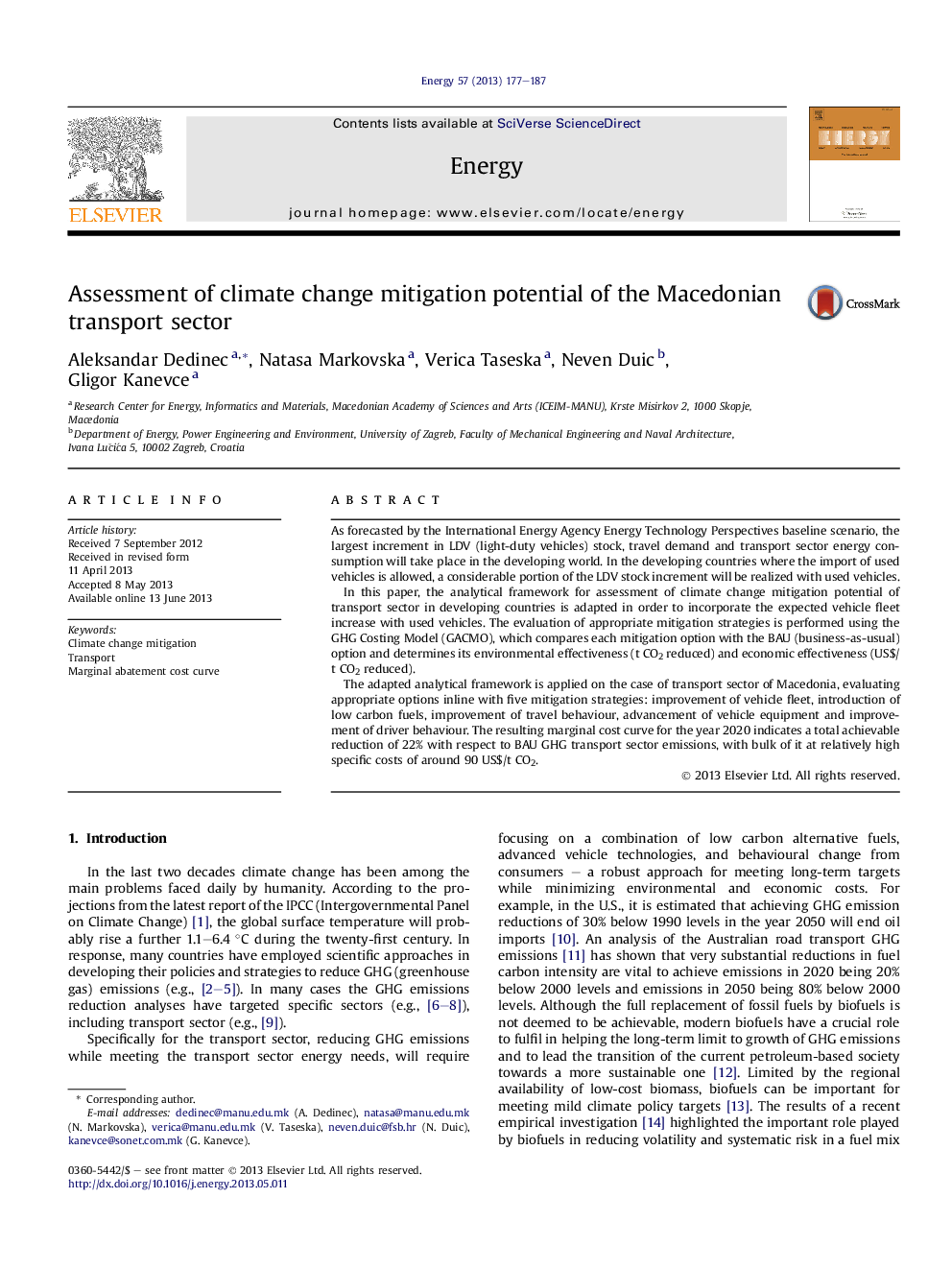| Article ID | Journal | Published Year | Pages | File Type |
|---|---|---|---|---|
| 1733061 | Energy | 2013 | 11 Pages |
•The expected vehicle fleet increase with used vehicles is taken into account.•The evaluation is performed using GACMO costing model.•Total achievable reduction in 2020 is 22% with respect to baseline emissions•Bulk of the reduction attainable at relatively high specific costs of around 90 US$/t CO2.
As forecasted by the International Energy Agency Energy Technology Perspectives baseline scenario, the largest increment in LDV (light-duty vehicles) stock, travel demand and transport sector energy consumption will take place in the developing world. In the developing countries where the import of used vehicles is allowed, a considerable portion of the LDV stock increment will be realized with used vehicles.In this paper, the analytical framework for assessment of climate change mitigation potential of transport sector in developing countries is adapted in order to incorporate the expected vehicle fleet increase with used vehicles. The evaluation of appropriate mitigation strategies is performed using the GHG Costing Model (GACMO), which compares each mitigation option with the BAU (business-as-usual) option and determines its environmental effectiveness (t CO2 reduced) and economic effectiveness (US$/t CO2 reduced).The adapted analytical framework is applied on the case of transport sector of Macedonia, evaluating appropriate options inline with five mitigation strategies: improvement of vehicle fleet, introduction of low carbon fuels, improvement of travel behaviour, advancement of vehicle equipment and improvement of driver behaviour. The resulting marginal cost curve for the year 2020 indicates a total achievable reduction of 22% with respect to BAU GHG transport sector emissions, with bulk of it at relatively high specific costs of around 90 US$/t CO2.
